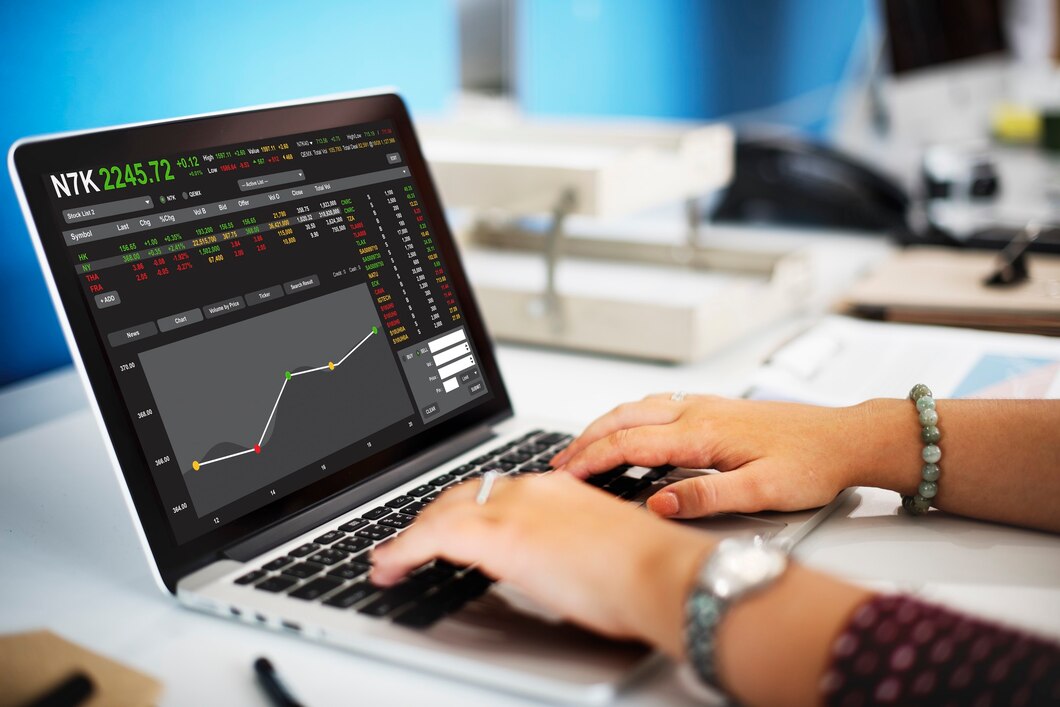
Day Trading vs. Long-Term Investing: Which is Right for You?
Two primary strategies dominate for growing wealth in the stock market: day trading and long-term investing. Both have advantages and risks, but choosing the right one depends on your financial goals, risk tolerance, and time commitment.
This guide will explore day trading vs. investing, the best stock investment strategies, and the pros and cons of trading vs. holding stocks. By the end, you’ll better understand which path suits your financial ambitions.

What is Day Trading?
Day trading is a short-term investment strategy where traders buy and sell stocks (or other assets) within the same day to capitalize on small price fluctuations.
How Day Trading Works
- Traders monitor stock charts, trends, and market movements in real-time.
- They enter and exit positions within minutes or hours, aiming to make quick profits.
- Advanced trading tools and technical analysis guide their decision-making.
Key Characteristics of Day Trading
- Requires active market monitoring throughout the day.
- Involves high-frequency trading and rapid decision-making.
- Relies on liquidity and volatility to generate profits.
What is Long-Term Investing?
Long-term investing focuses on buying and holding stocks for years, allowing investments to grow over time.
How Long-Term Investing Works
- Investors research and choose fundamentally strong stocks.
- They hold their investments despite market fluctuations, benefiting from compound growth.
- They focus on dividends, stock appreciation, and reinvesting earnings.
Key Characteristics of Long-Term Investing
- Requires patience and a long-term perspective.
- Relies on fundamental analysis rather than short-term price changes.
- Prioritizes stability over daily volatility.

Pros & Cons of Day Trading
Pros of Day Trading
- Quick Profits: Potential for high returns within hours or minutes.
- No Overnight Risk: Positions are closed daily, reducing exposure to market news.
- Exciting & Fast-Paced: Appeals to those who enjoy active trading and market engagement.
Cons of Day Trading
- High Risk: Losses can mount quickly due to market volatility.
- Emotional Pressure: Requires intense focus, discipline, and quick decision-making.
- High Costs: Frequent transactions mean higher brokerage fees and taxes.
Pros & Cons of Long-Term Investing
Pros of Long-Term Investing
- Wealth Accumulation: Benefits from compound growth and stock appreciation.
- Lower Risk: Reduced impact of short-term market fluctuations.
- Less Time-Intensive: No need for daily monitoring or quick decisions.
❌ Cons of Long-Term Investing
- Market Downturns: Stock values may decline, requiring patience.
- Longer Capital Lock-In: Funds are tied up for years, limiting liquidity.
- Potentially Slower Returns: Gains take time compared to fast-paced trading.
Trading vs. Holding Stocks: Key Differences
| Feature | Day Trading | Long-Term Investing |
| Investment Horizon | Short-term (minutes to hours) | Long-term (years to decades) |
| Risk Level | High | Moderate to Low |
| Profit Strategy | Quick, small gains | Compound growth & dividends |
| Market Involvement | High (active trading) | Low (passive investing) |
| Emotional Stress | High | Low |
Who Should Consider Day Trading?
Day trading might be right for you if:
✅ You have experience in technical analysis and market trends.
✅ You can dedicate full-time hours to tracking stocks.
✅ You can handle high risk and emotional stress.
✅ You have enough capital to absorb potential losses.
However, beginners should be cautious, as day trading can be financially and emotionally draining.
Who Should Consider Long-Term Investing?
Long-term investing is ideal for:
✅ Those looking for stable, sustainable growth.
✅ Investors with a low-risk tolerance.
✅ People who want passive income through dividends.
✅ Anyone focused on retirement savings and wealth building.
Long-term investing suits individuals who prefer a hands-off approach while still benefiting from market growth.
Best Stock Investment Strategies for Day Traders
Day traders rely on specific techniques to maximize profits:
1. Scalping
- Making multiple quick trades per day for small profits.
- Requires high-speed execution and fast decision-making.
2. Momentum Trading
- Buying stocks that are moving strongly in one direction.
- Depends on market trends and volume spikes.
3. Breakout Trading
- Entering positions when a stock breaks resistance or support levels.
- Works well with high-volatility stocks.
4. News-Based Trading
- Trading based on economic reports, earnings releases, or industry news.
- Requires quick reactions to market-moving events.
Best Stock Investment Strategies for Long-Term Investors
Long-term investors focus on stable, sustainable strategies:
1. Buy and Hold
- Investing in fundamentally strong stocks and holding for years.
- Suitable for retirement planning and wealth growth.
2. Dividend Investing
- Choosing stocks with consistent dividend payouts.
- Provides passive income alongside stock appreciation.
3. Index Fund Investing
- Investing in S&P 500 or other index funds for diversified exposure.
- Ideal for low-maintenance, risk-managed growth.
4. Growth Stock Investing
- Buying stocks with high future growth potential.
- Focuses on tech, innovation, and emerging industries.
Common Mistakes to Avoid in Trading and Investing
🚨 Day Trading Mistakes
❌ Overtrading – Making too many trades leads to excessive fees.
❌ Ignoring Stop-Loss Orders – Increases risk of heavy losses.
❌ Emotional Trading – Letting fear or greed dictate decisions.
🚨 Long-Term Investing Mistakes
❌ Lack of Diversification – Investing too much in one stock.
❌ Timing the Market – Trying to predict highs and lows.
❌ Ignoring Fundamentals – Not researching company financials.

The Future of Trading & Investing
With AI and automation transforming financial markets, both day traders and long-term investors can benefit from:
- Algorithmic Trading – AI-driven market predictions.
- Robo-Advisors – Automated, data-driven investment guidance.
- Blockchain & Cryptocurrencies – New opportunities in decentralised finance.
Understanding these trends can help maximise returns and reduce risk.
Conclusion
Which is right for you: day trading or long-term investing?
💰 If you love high-speed decision-making and can handle risk, day trading might be the best fit.
📈 If you prefer steady wealth-building with lower risk, then long-term investing is the way to go.
The best approach? A mix of both strategies to balance short-term gains with long-term financial security.
👉 Ready to start investing? Explore the best stock investment strategies and create a plan that aligns with your financial goals today!


